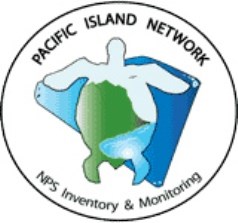
Jim Kingwell Ethnographic ResearchKalaupapa 2002 - 2005: A Summary Report of the Kalaupapa Ethnographic Project -- This document describes life in the community of Kalaupapa from 2002 - 2005. The document utilizes interviews with former Hansen's disease patients, and workers with the Hawai'i State Department of Health and National Park Service (30 MB, 122 pages). 
Sarah Von Hoene Coral Reef ResearchKalaupapa's coral reef communities are extensive in a few sheltered areas but primarily consist of scattered coral colonies on basalt boulder habitat. Sandy basins exist seaward of the drainages for the three principal watersheds within the park. Endemic Hawaiian limpets (opihi) can be found along the park's extensive basalt shorelines. There are significant issues associated with upland development, including sedimentation and other runoff-associated issues. Subsistence fishing is generally not considered a problem (except for opihi), but commercial fishing vessels have been observed operating within the park. Hawaii-Pacific Islands Cooperative Ecosystems Studies Unit (HPI-CESU), a coalition of governmental agencies, non-governmental organizations and universities, promotes research, education and technical assistance to support better stewardship of imperiled natural and cultural resources within the Pacific.

Inventory & MonitoringThe Natural Resources Inventory and Monitoring (I&M) Program provides an opportunity to improve the quantity, quality and availability of natural resources data for park managers and the public. It is a two-phase program. The first phase involves baseline inventory, or an extensive point-in-time effort to determine the location and condition of selected biologic resources. Inventory may involve both acquisition of new information and the compilation of existing information from disparate sources. The second phase is monitoring, or the collection and analyses of repeated observations over time to evaluate changes in the condition of a resource. Visit the Inventory and Monitoring webpage to read studies, watch videos, and use interactive maps to learn about the latest science being done on Kalaupapa's plant communities, invasive plants and animals, coral reefs, marine fish, streams, water quality, and climate. Kalaupapa Research Articles |
Last updated: February 28, 2024
